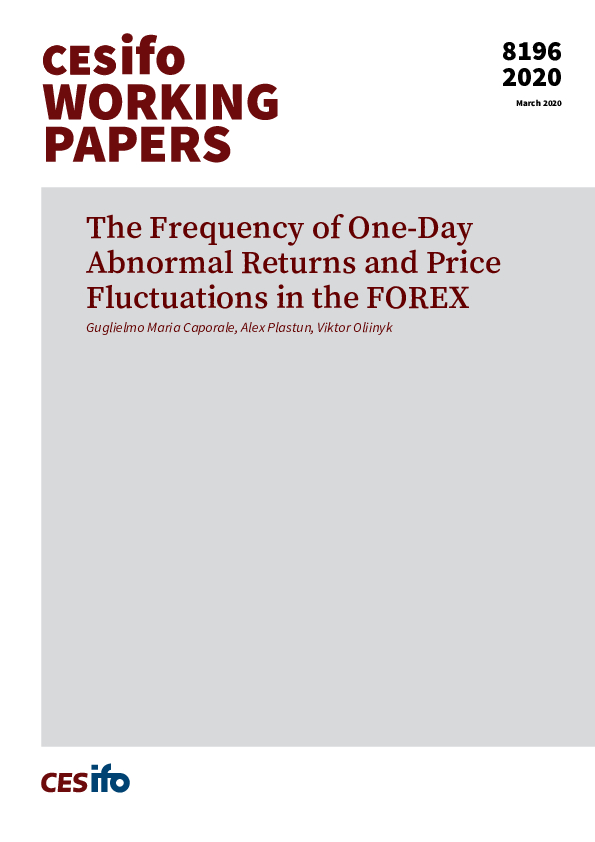The Frequency of One-Day Abnormal Returns and Price Fluctuations in the FOREX
CESifo, Munich, 2020
CESifo Working Paper No. 8196

This paper analyses the explanatory power of the frequency of abnormal returns in the FOREX for the EURUSD, GBRUSD, USDJPY, EURJPY, GBPCHF, AUDUSD and USDCAD exchange rates over the period 1994-2019. Abnormal returns are detected using a dynamic trigger approach; then the following hypotheses are tested: their frequency is a significant driver of price movements (H1); it does not exhibit seasonal patterns (H2); it is stable over time (H3). For our purposes a variety of statistical methods (both parametric and non-parametric) are applied including ADF tests, Granger causality tests, correlation analysis, (multiple) regression analysis, Probit and Logit regression models. No evidence is found of either seasonal patterns or instability. However, there appears to be a strong positive (negative) relationship between returns in the FOREX and the frequency of positive (negative) abnormal returns. On the whole, the results suggest that the latter is an important driver of price dynamics in the FOREX, is informative about crises and can be the basis of profitable trading strategies, which is inconsistent with market efficiency.
Monetary Policy and International Finance
Empirical and Theoretical Methods